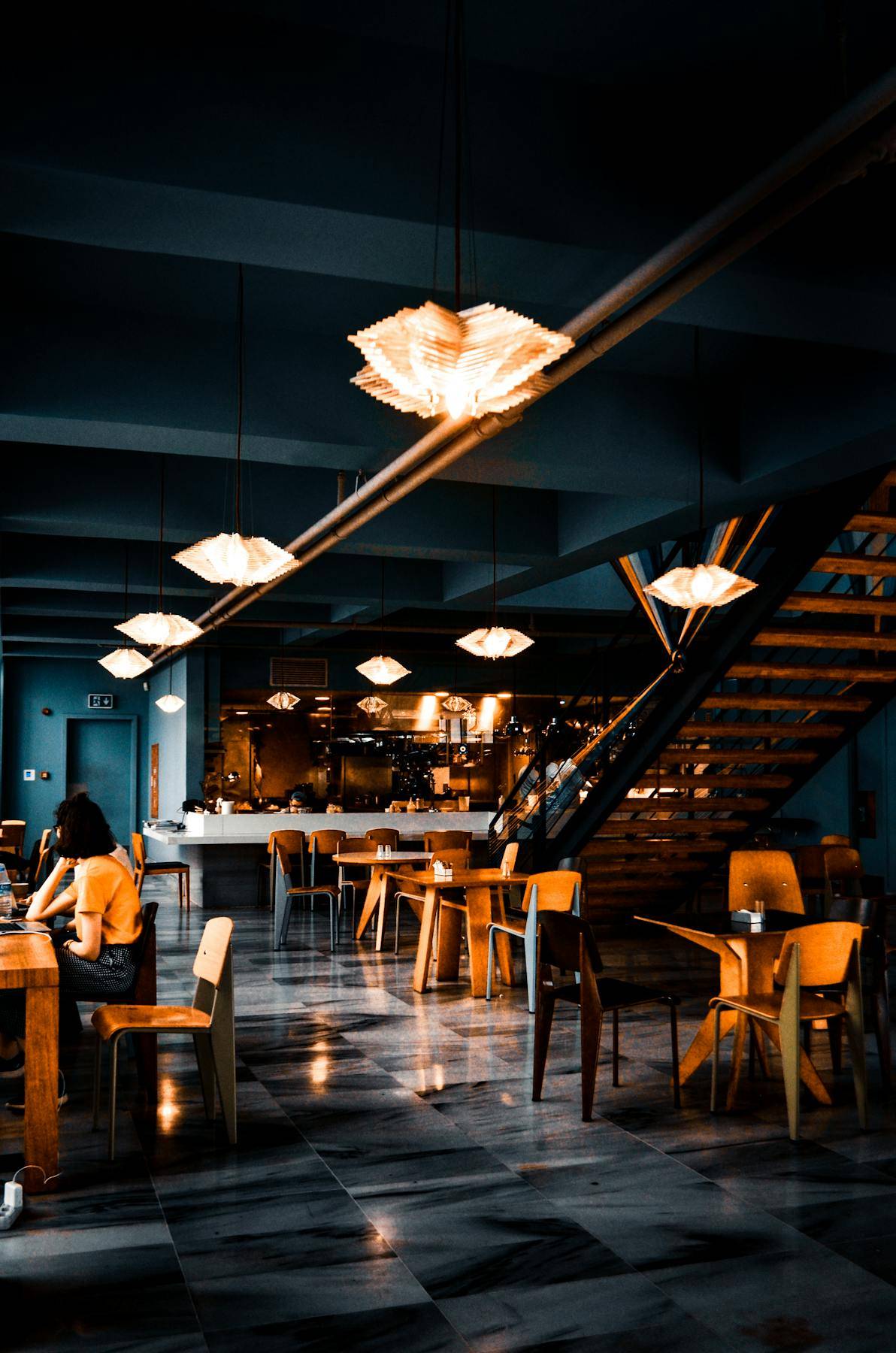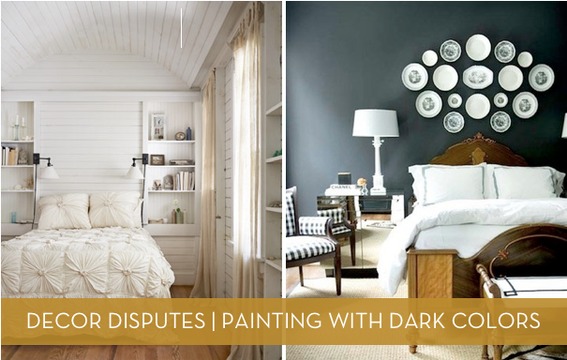When it comes to painting a room, there is a common belief that dark colors can make a space look smaller. In this blog post, we will explore the beauty of dark wall colors and debunk the myth that they make rooms look smaller.
This age-old question has been debated among interior designers and homeowners alike. It may seem counterintuitive to paint a room in a dark color. Dark colors can create stunning and sophisticated spaces.
While dark colors can create a cozy atmosphere, they can also lend themselves to an artistic, moody, or elegant aesthetic with the right room design.
So, do dark colors really make rooms look smaller? Let’s explore this topic further and debunk this myth, shall we?
The Myth of Dark Colors Shrinking Spaces
The common belief that dark colors inherently cause rooms to feel smaller is a misconception that overlooks the subtle effects of color on perception.
Dark hues, known for their light-absorbing qualities, do not automatically lead to a sense of confinement within a space.
Instead, when applied with a thoughtful approach to design, these colors can introduce a level of depth and complexity, enriching the room’s character.
The interplay of shadows and light, facilitated by dark paint colors, adds a layer of visual interest that can expand a room’s perceived boundaries.
Far from shrinking spaces, dark walls can encapsulate an atmosphere of coziness and sophistication, effectively altering the spatial experience.
By challenging the traditional views on color and space, dark paints emerge as a bold choice capable of enhancing and transforming interiors into immersive environments.
The Artistic Flair of Dark Walls
Embracing dark walls in an interior space opens the door to a place where artistry and mood merge. Which offers a bold and provocative canvas.
This choice in color acts as a foundation for creativity, enabling rooms to transform into visually stunning experiences.
Dark paint colors, ranging from the deep tones of emerald green to the velvety depths of burgundy, provide a backdrop that enhances any decor’s visual drama and allure.
They encourage a play of light and shadow that adds dimension and intrigue. This makes art pieces, furniture, and textures stand out with distinction.
The impact of dark colors extends beyond mere aesthetics. They encapsulate a mood that light color tones cannot replicate, crafting visually compelling and emotionally rich environments.
By opting for dark paint colors, interior spaces are granted an artistic flair that celebrates depth, complexity, and the sheer beauty of darkness as an element of design.
Creating Moody and Elegant Spaces
In interior design, the strategic application of dark colors on walls is a powerful tool for cultivating environments infused with a mood of elegance and mystery.
This approach, while daring, unlocks a spectrum of aesthetic possibilities that a lighter shade may fail to achieve.
Dark walls act as a profound backdrop that accentuates a space’s depth and richness, enabling designers to create an ambiance of sophistication and intimate luxury.
This aesthetic choice is particularly effective in spaces designed for relaxation or social gatherings. Especially where ambiance is key to the overall experience.
The allure of dark walls lies in their visual impact and their ability to transform a room into a sanctuary of comfort and style.
When paired with carefully selected furnishings and accent pieces, these colorings contribute to a dynamic interplay between the amount of light, shadows, texture, and color.
Luxurious fabrics, metallic accents such as brass, and ambient lighting complement the dark palette, elevating the space to a level of refined elegance that invites conversation and contemplation.
Through the careful use of dark paint colors, designers and homeowners alike can develop visually arresting and vibrant spaces. All with a mood of understated luxury and tranquility.
Tips for Decorating with Dark Colors
Mastering the use of dark paint shades in interior design demands both inventive thinking and thoughtful implementation.
A crucial element to consider is the sheen of the paint.
Matte finishes absorb more light and contribute to a more intimate and enveloping ambiance. This is ideal for creating cozy nooks or contemplative spaces.
Contrarily, gloss finishes add vibrancy by reflecting light, lending the area a more dynamic and wide feel.
Balancing dark walls with lighter elements is essential to maintain equilibrium within the space.
Incorporating lighter furnishings, decorative accents, or careful lighting can accentuate the depth of dark walls without diminishing their powerful impact.
Adding texture through elements like rugs, drapes, or throws can ease any potential overpowering effect of dark shades, thus keeping the space welcoming and energetic.
Enhancing these factors guarantees that the bold selection of dark colors elevates the atmosphere. Which turns it into a seamless fusion of elegance and charm.

Creating Dramatic and Eye-Catching Spaces
The allure of incorporating dark colors within the realm of interior design cannot be overstated.
These hues possess the unique ability to transform ordinary rooms into areas of dramatic elegance and captivating beauty.
Far from being merely a background, dark walls become a focal point. They advance a space’s aesthetic appeal through their depth and intensity.
The choice of dark paint colors pushes design innovation. It encourages a balanced blend of textures, materials, and light to merge into a visually impactful environment.
By embracing the rich palette of dark colors, you can leverage the potential to create striking and subtle contrasts.
This technique enables furniture and decor placement to come alive against the dark backdrop. Each element adds to the dynamic and visual tale.
Artificial and natural light interplay becomes a key element in this design strategy. Carefully placed lighting fixtures enhance the space’s ambient qualities, cast shadows, and highlight textures to dramatic effect.
These interiors, marked by their bold and eye-catching qualities, resonate with a sense of depth that goes beyond physical dimensions, engaging the senses and invoking a strong emotional response.

Do Dark Colors Make Rooms Look Smaller?
The decision to incorporate dark colors into a room’s design is a testament to the transformative power of color.
It proves that with the right design elements, spaces can surpass their limitations. Offering experiences that are as rich and complex as the colors that define them.
But do dark colors really make a room look smaller?
It’s a popular design belief, yet it’s not that straightforward. There are simply too many other factors at play.


